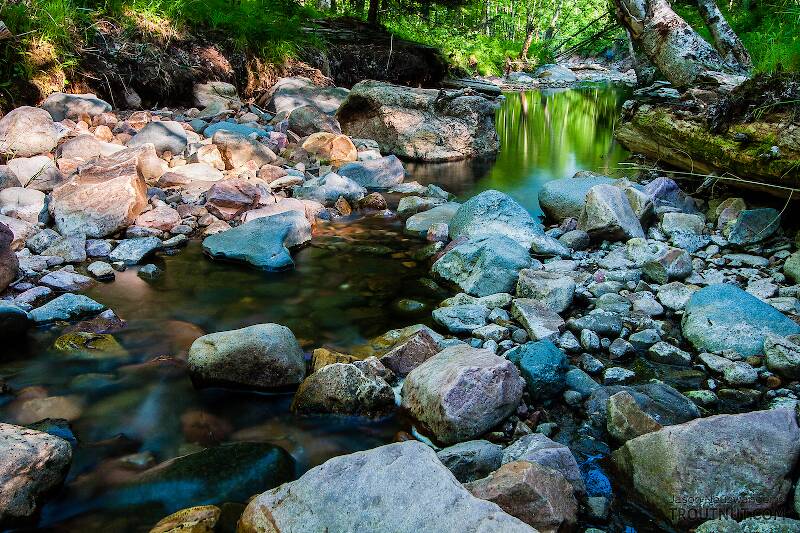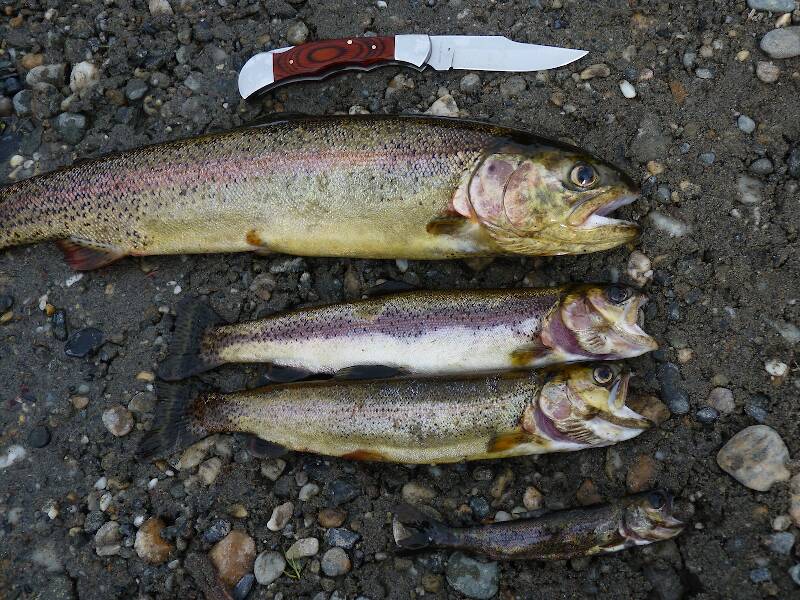
Hex Mayflies
Hexagenia limbata
The famous nocturnal Hex hatch of the Midwest (and a few other lucky locations) stirs to the surface mythically large brown trout that only touch streamers for the rest of the year.
Featured on the forum

This specimen appears to be of the same species as this one collected in the same spot two months earlier. The identification of both is tentative. This one suffered some physical damage before being photographed, too, so the colors aren't totally natural. I was mostly photographing it to test out some new camera setting idea, which worked really well for a couple of closeups.

Troutnut is a project started in 2003 by salmonid ecologist Jason "Troutnut" Neuswanger to help anglers and
fly tyers unabashedly embrace the entomological side of the sport. Learn more about Troutnut or
support the project for an enhanced experience here.
GldstrmSam on Nov 26, 2011November 26th, 2011, 6:44 pm EST
Hi everyone,
What are some good fly tying materials to have on hand at all times. A few of the things I can think of are peacock hurl, multiple colors of chenille, and thread. I know there are many others and that is where I need you!!!
Also a good list of hook sizes and types to have at all times. I am most interested in tying scuds and terrestrial, trout flies.
Thanks,
Sam
What are some good fly tying materials to have on hand at all times. A few of the things I can think of are peacock hurl, multiple colors of chenille, and thread. I know there are many others and that is where I need you!!!
Also a good list of hook sizes and types to have at all times. I am most interested in tying scuds and terrestrial, trout flies.
Thanks,
Sam
There is no greater fan of fly fishing than the worm. ~Patrick F. McManus
Taxon on Nov 27, 2011November 27th, 2011, 4:20 am EST
Hi Sam-
Although I can fully appreciate where you are coming from with your question, please allow me to make a suggestion. You may find the suggestion to be somewhat counter-intuitive, but if you will follow it, at least until you no longer need an answer to the question you posed, you will be far ahead in terms of money saved, unnecessary inventory, and the ability to tie more of that pattern, should it become desirable.
My suggestion would be to:
1) Select a specific pattern you want to tie.
2) List the materials necessary for tying that pattern in a single color (generally the first color mentioned), and a single size. With regard to size, just ask an experienced fly tier which size he or she would recommend for that pattern, if they were limited to tying it in only one size.
3) Purchase the required materials in the smallest quantity that you can.
4) Tie up at least a dozen flies of that pattern in a single size and color.
5) Store both the materials list for that pattern, and the purchased materials themselves, in a zip-lock freezer bag.
Although I can fully appreciate where you are coming from with your question, please allow me to make a suggestion. You may find the suggestion to be somewhat counter-intuitive, but if you will follow it, at least until you no longer need an answer to the question you posed, you will be far ahead in terms of money saved, unnecessary inventory, and the ability to tie more of that pattern, should it become desirable.
My suggestion would be to:
1) Select a specific pattern you want to tie.
2) List the materials necessary for tying that pattern in a single color (generally the first color mentioned), and a single size. With regard to size, just ask an experienced fly tier which size he or she would recommend for that pattern, if they were limited to tying it in only one size.
3) Purchase the required materials in the smallest quantity that you can.
4) Tie up at least a dozen flies of that pattern in a single size and color.
5) Store both the materials list for that pattern, and the purchased materials themselves, in a zip-lock freezer bag.
Sayfu
Posts: 560
Posts: 560
Sayfu on Nov 27, 2011November 27th, 2011, 5:47 am EST
I'm with taxon on that one for sure. Buy the materials for the flies that you tie, and move along that way. But you can always acquire free materials as well such as the skins that I take time to process from the game birds that I shoot in the Fall..even plinked a starling with a pellet gun years ago, and have the skin. And some mole skins from the critters traversing through my yard. That stuff is fun to acquire, but always have in mind the convenience of storing. The extra cost of something in a smaller zip lock bag sold in the flyshop can be a lot better in the long run than a pillow case full of something you think is a heck of a deal. And factor in the bug infestation thing. I once had a moth hatch in the Eddie Bauer store(I managed the flyshop) because I bought materials from a customer that didn't process his feathers properly! We had some very expensive garments not far from the hatches I had going on!
GldstrmSam on Nov 27, 2011November 27th, 2011, 8:59 pm EST
Thanks Everyone,
Sam
Sam
There is no greater fan of fly fishing than the worm. ~Patrick F. McManus
Quick Reply
Related Discussions
Topic
Replies
Last Reply
Invitation to the 30th Slovenian Open Fly Tying Championship 2017
In General Discussion by Lucky_luke
In General Discussion by Lucky_luke
0
Jan 5, 2017
by Lucky_luke
by Lucky_luke
8
Nov 5, 2020
by Stickstring
by Stickstring



